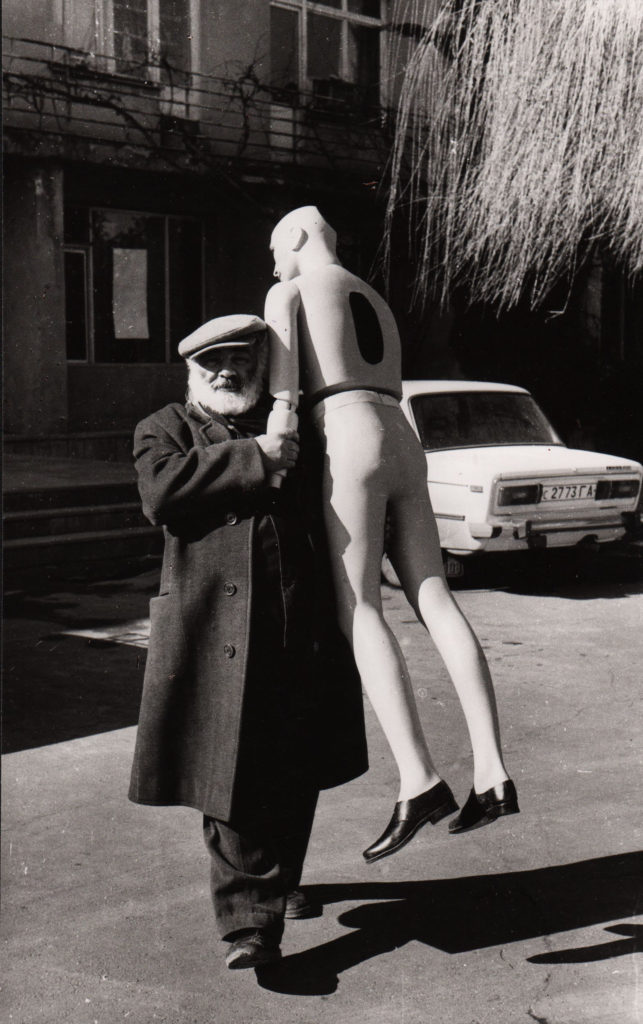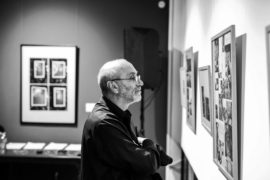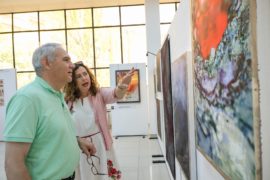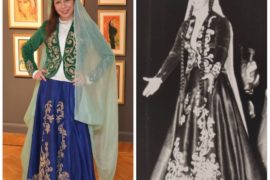A new addition to Armenia Art Fair, the very first Armenia Art Week will open on 25th May 2019, offering an exciting cultural program that includes work from renowned international and local artists and curators. Included within this series of art-related events, Poland’s Asymetria Gallery will present Burned Archives, an exhibition with a strong focus on archival photography of Sergei Parajanov.

Sergei Parajanov (1924-1990) is among one of the most recognised Armenian artists internationally. Born in Tbilisi, the Armenian film director rebelled against the principles of socialist realism to inventing his own cinematic style, which ultimately led to many of his projects being banned by Soviet film administrations.
Armenian-Georgian photographer Yuri Mechitov (b. 1950) began his career as the director of neorealist documentary Nina Iosifovna Koslovskaya in the late 1970s, whose titular heroine once taught history to Parajanov. Mechitov invited the now infamous director to a screening of Nina. Having been met with Parajanov’s approval, Mechitov went on to follow Parajanov on his cinematic journey as a photographer. During this time, he collected many years worth of material, going on to found his own archive of images of Parajanov in Tbilisi. Some of this archive will be displayed within Burned Archives, an exhibition that will be presented by Asymetria Gallery during Armenia Art Week in May 2019.
A group exhibition – also including the work of Nikita Kadan, Zbigniew Libera, Pawel Pierscinski, Waclaw Ropiecki – Burned Archives will ask why artists create, and sometimes go on to destroy their archives. Within the exhibition, the act of burning the archive will be divided into three stages: “Destruction” (burning), “Archivization” (preservation) and “Creation”.
“There is no such separation from destruction”, explains Rafal Lewandowski, curator of the exhibition, “There is always a birth and creation that comes from destruction.” Thus, Polish avant-garde artist Zbigniew Libera (b. 1959) – who destroyed many of his works throughout his life – will exhibit a film and installation in the Armenian language to conclude the exhibition. “We understand that all living images are the survival of those which are erased”, adds Lewandowski, “We often forget.”

On display in the “Destruction” section of the exhibition, will be remnants of landscape photographer Pawel Pierscinski’s work (1938-2017), who systematically burnt his negatives for twenty years after being evicted from his studio. Similarly, after becoming a missionary in remote Russia following a friend’s death in the 1990s, Waclaw Ropiecki (b. 1951) destroyed his works on short returns to his home city of Wroclaw.
The “Archive” part will focus on Mechitov’s photographs of Parajanov. “The negatives are kept in old soviet envelopes on which he attached the contact photo and adds some remarks in Russian”, says Lewandowski, “It is amazing and beautiful together. I’ve decided to show some parts of it in the form of montages.”

Within the final “Creation” segment, Mechitov’s classic photographs present the world of Sergei Parajanov. On exhibiting work focused on Parajanov in Armenia, Lewandowski says: “It’s like being in the centre of a cyclone of the heritage of Sergei Parajanov – completely mysterious. I don’t know what to expect, maybe that’s the most interesting part.” Lewandowski did some research at the Sergei Parajanov Museum in Yerevan. “It was very fruitful and the people there are very nice”, he explains, “In fact, in Yerevan – with Yuri Mechitov – we will show completely new works about this great artist.” This will be in the form of The Atlas of Creation of Sergei Parajanov, which is a big part of the result of Lewandowski and Mechitov’s journey.
Burned Archives asks why archives are made, and why they are destroyed, commenting on the significance of the production, preservation and death of an image. Rather than offering questions into why such repositories are created and demolished, the exhibition will allow the viewer to ask questions about these images, while also presenting the Armenia Art Fair audience with archival images of Sergei Parajanov, which they are unlikely to have seen before.



